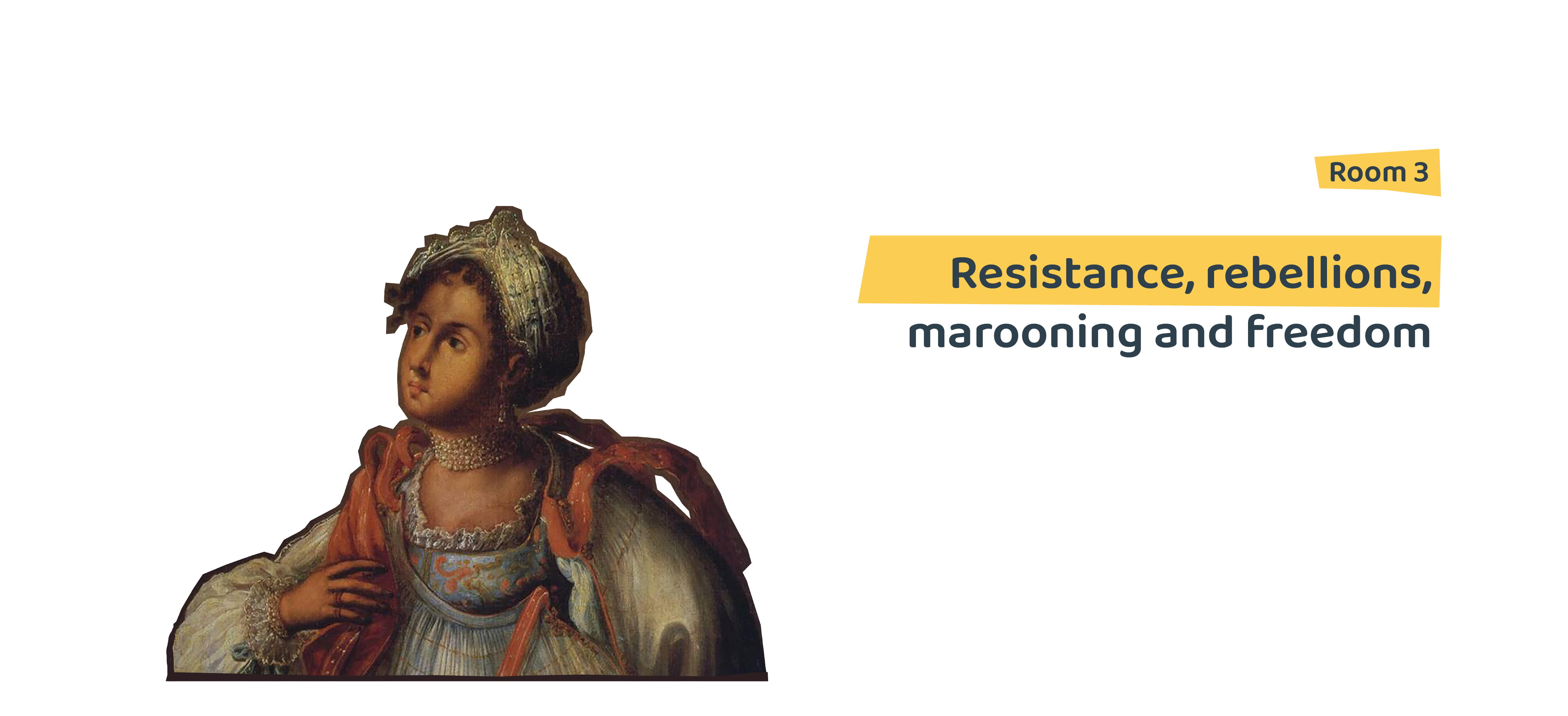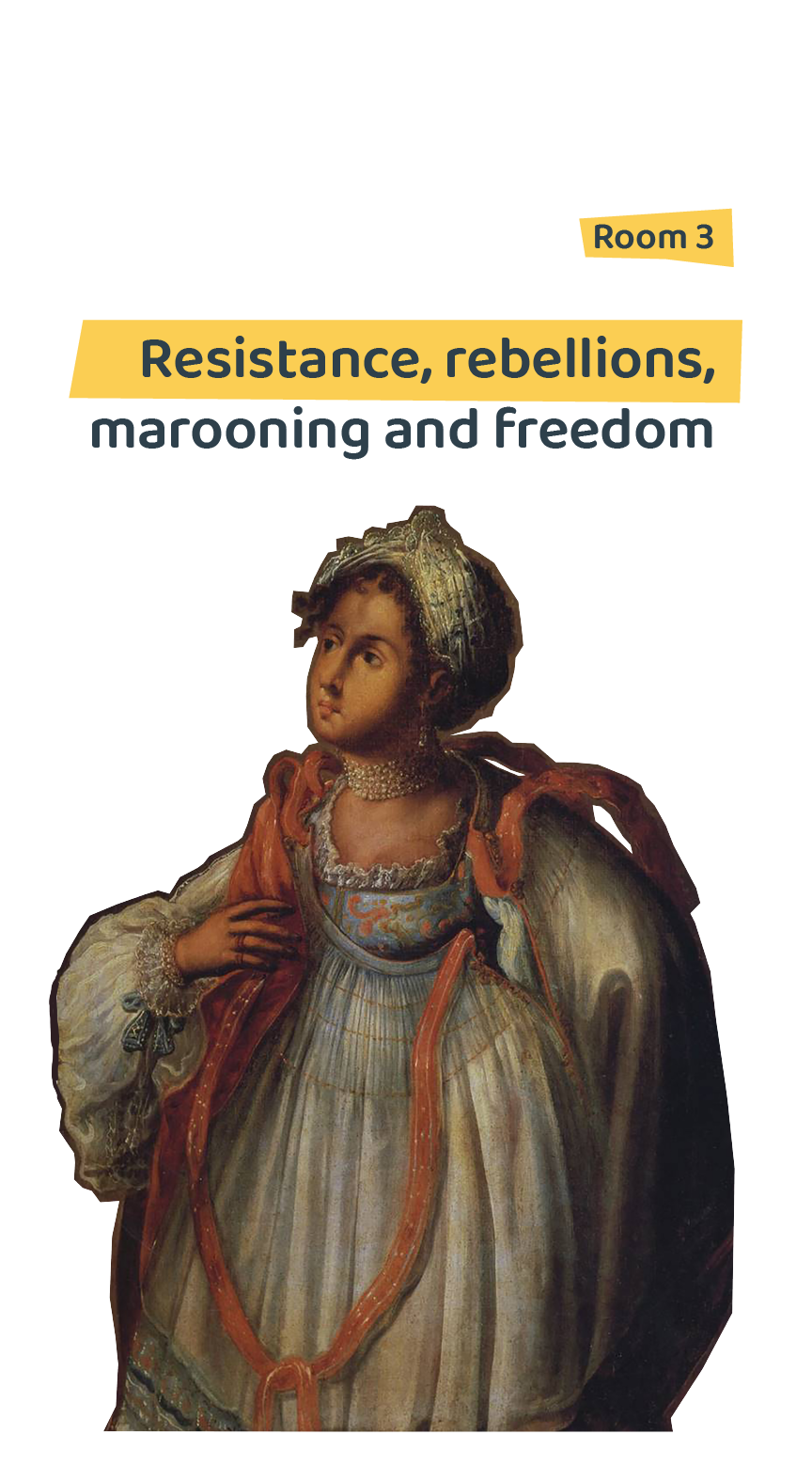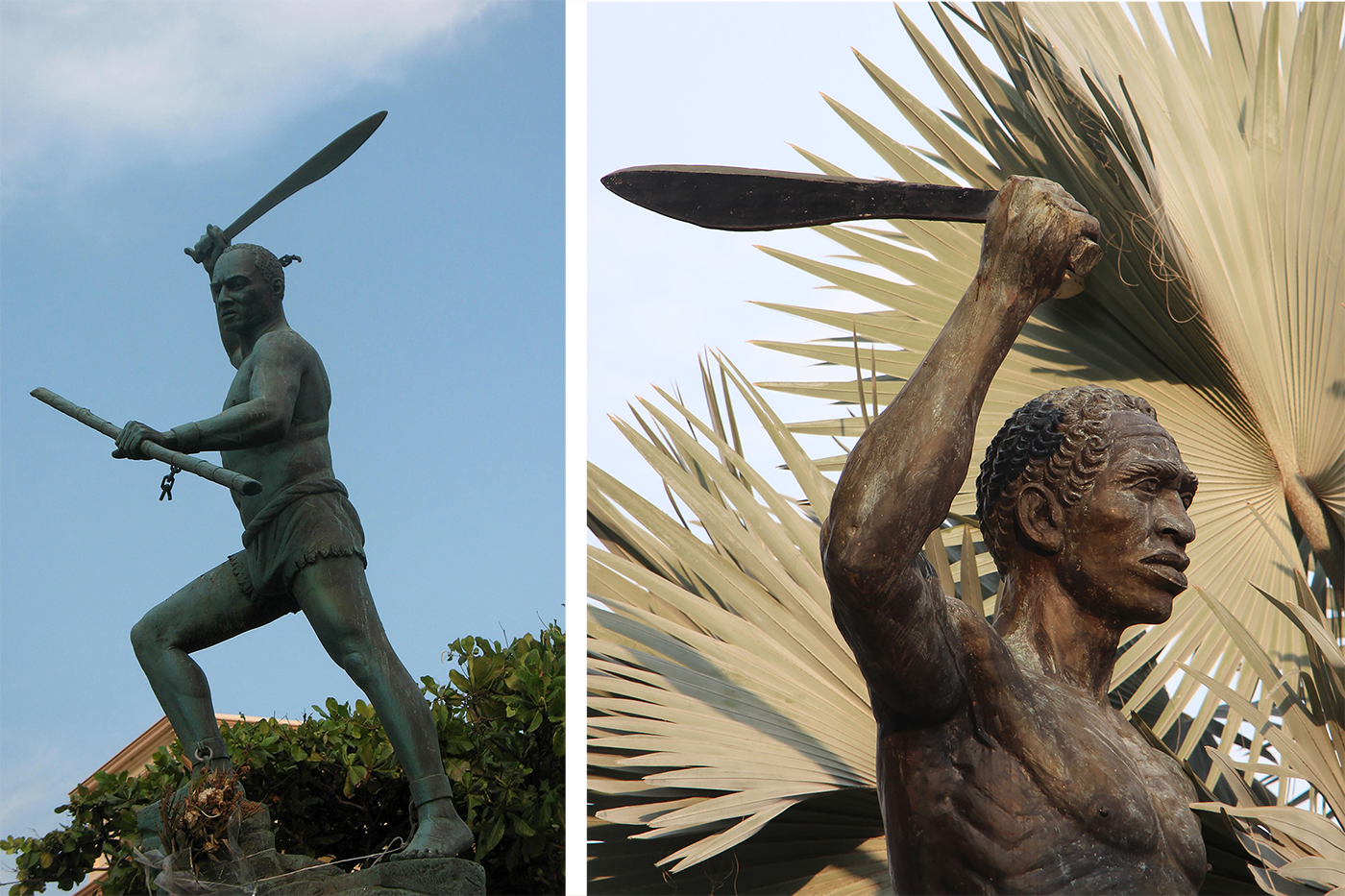



Archive document. Freedom letter of Augustina de Oyaga, mulata, 1706, where is stated: […] set aside, and of her goods and heirs [sic] of all the right to […] they had against said mulata and henceforth promise to sign it now and not against this written will by any cause or reason [sic] and if with said document it is not valid and they are free [sic] of trial and for the same reason for it to be approved [sic] and re validated this document to which fulfillment binds all goods of said deceased to be submitted to the justice of the […] and especially of this villa, and they renounce the municipal charter and the law cicumuenerit so that with all the severity of the law and its execution is expedited as if it were passed sentence of a tried subject, and they renounce whichever regulations in their favor and the general law and so it is signed and granted with Captain Don Diego Beltrán, Captain Lázaro de Llano, Zebastián de Angulo, all neighbors of this villa, as witnesses. There were various forms to obtain freedom. One of them was known as manumission, which consisted in the owners of the slave, while alive or in their testament, granting the enslaved person their freedom. Another one was by purchasing it, this meant that the slaves managed to obtain the money to buy their freedom by working paid jobs or getting the money lent by relatives or friends. Furthermore, birth was another possibility. Since the enslavement of Indigenous people was prohibited, Indigenous women who would marry or have informal relations with slave men gave birth to free children. Lastly, running away and marooning were other possibilities to search for freedom, escaping the subjugation and encumbrances.
Although enslavement was a form of submission which suppressed rights and personal choices, some possibilities were available for the enslaved women and men to fight for certain rights that the law granted them. There is information of various women from cities like Puebla, Oaxaca and Mexico City who sued their owners because they weren’t allowed conjugal visits, were abused or their manumission wasn’t enacted; all of this acts could be prosecuted by law. Among the many instances, we know about the case of Leonor; enslaved in Mexico City around the 17th century. She filed a lawsuit against nuns of an important convent because they refused to honor the freedom of her son.

Digital resources: Left image · Right image
Nyanga or Yanga was the leader of a maroon group located around Cordoba, Veracruz. His settlement managed to negotiate with the Vice-Regal authorities and achieved the recognition of its freedom in 1631. These sculptures can be found today in Yanga, Veracruz.
Many slaved women and men resisted and rebelled against the submission and control. From cities, ports, manufacturing plants, haciendas or mines they would run away to other regions. In some cases the runaways got together in groups, assaulting ranches or haciendas to get provisions and other necessities. These groups were known as the maroons, a derogatory term which meant “wild animals from the hills.” Description of runaway slave women from Mexico City in the Mexico gazette of 1784: …Whoever might know of two mulata slaves, one named María Josefa, the other Eusebia Josefa Machuca, the first one “alobada,” straight hair, small eyes, tall and thick body frame, with carmine and blue underskirts, multicolored cloth or another blue and gold cloth from Ozumba. The other one with grayish hair, medium body frame, slender, bulging eyes and missing a tooth on the right side; dressed the same way as the first one with a silver-blue cloth. Do notify to closest Justice available on the grounds of running away from the homes of their owners, whom they stole from. This can be attested at Baño nuevo de los pajaritos in Salto del Agua…
There were several maroon uprisings, one of the most famous ones was the one headed by Nyanga or Yanga. Since 1590, he started to rebel and rob stagecoaches and haciendas nearby Cordoba, Veracruz. For many years, Yanga fended off the Vice-Regal authorities and the landowner armies up until 1631, when Yanga’s group managed to negotiate with the authorities and win freedom for their people, under certain conditions. This town was called San Lorenzo de Cerralvo or de los Negros, today it is known as Yanga in honor to its liberator. There also were maroons at Huatulco and Amapa in Oaxaca and in other regions of Veracruz.
Enslaved people always resisted subjugation and slavery. We have records about actions of resistance brutally repressed dating from the time when they abducted and forced the relocation of Africans away from their homelands, to all the way after crossing the oceans. There were mutinies too at the merchant associations where they were huddled, and also on the ships they were transported on. Throughout the Vice-Regal period, many successful rebellions and uprising took place along different territories of the New Spain. As an example: in 1612, 33 “negros” and “negras” were jailed; allegedly, they were planning to rebel at Mexico’s capital. These people were captured and later executed at the main square as a warning. Among many other stories we know that in Cuautla de Amilpas, Morelos, there was an uprising attempt in the 17th century. Another uprising in the 18th century, at the Xalmolongo hacienda in the State of Mexico, ended with the capture and punishment of the slaves, several of them women. While doing everyday activities, slave women also carried out resistance acts like “spreading certain powders into the master’s chocolate” to make them dizzy.
